These plank exercises will bring your ab workout to the next level!
Ahh, planks. They seem simple, but like with most exercises, proper form is key for them to be effective.
Planks are the single most effective exercise for your core, and can prevent many muscle imbalances, as well as prevent back pain and poor posture. Today, we will go over how to properly perform the basic plank and take a look at different plank exercises to take your workout to the next level.
Looking for an easy way to get started working out?
Grab our FREE Beginners Workout Guide - 3 Weeks To Tighter Abs, Sculpted Arms, And Toned Legs, by clicking here!
How To Do A Basic Plank
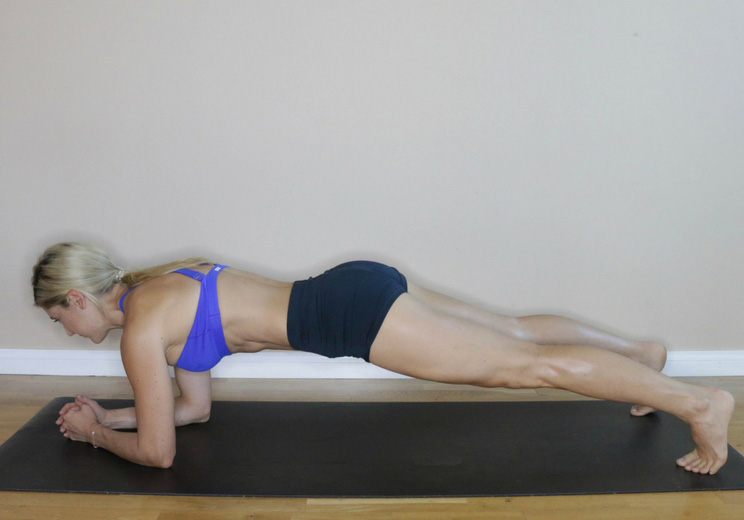
- Start by laying on your stomach on the ground or on an exercise mat. Position your elbows so that they are directly under your shoulder, and bent at a 90 degree angle. Place your palms flat on the floor and keep your forearms parallel to each other.
- Curl your toes under so that you place the weight on the balls of your feet.
- Engage your abdominals to lift your hips off the ground, leaving your knees on the ground. Keep a straight line from the crown of your head to your knees. This is a modified plank (pictured below).
- Engage your glutes, quadriceps and abs to lift your knees off the ground. There should be a straight line from your head to your feet.
- Hold this position for 20 seconds. As you get stronger, hold this plank position for as long as possible without compromising form. Remember to breathe naturally.
Plank Tips from Head-To-Toe
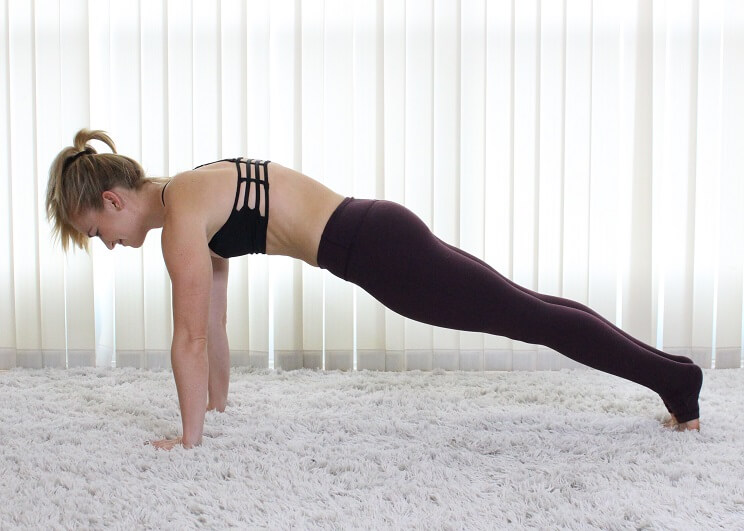
- Keep your neck neutral. Focus on a point that is about 12 inches in front of you. Be sure not to crank your neck too far forward, and don’t let your head “hang” down. Keep the crown of your head reaching forward and your neck lengthened.
- Hold your shoulders away from your ears. Engage your shoulders and draw them down your back, elongating your neck. Don’t allow the shoulders to “wing” out, but instead, try to keep a flat space between your shoulders. Imagine balancing a glass of water between your shoulders.
- Engage your chest. Press your palms and your forearms into the floor, as if you were trying to press it away from you. This will help engage your biceps and triceps as well.
- Lengthen your lower back. Scoop your pubic bone towards your belly button and engage your lower abs. This should create a lengthening feeling in your lower back and prevent injury and stress.
- Squeeze your glutes. Tighten your quadriceps (the front of your legs) and squeeze your glutes to keep your legs fully engaged, similar to how you should feel at the top of a squat position. Make sure your hips don’t drop or sag towards the floor.
- Hold your weight in the balls of your feet. Your feet should be flexed with your toes reaching towards your head. You should not feel as if you are in a “tip-toe” position. Reach your heels away from you as if you were reaching the crown of your head and your heels in opposite directions.
- Keep your form. As soon as you begin to feel your form is suffering, lower out of the plank. You’re going for quality, not quantity.
10 Different Plank Exercises for a Stronger Core
Start with the first three plank exercises. Once you begin to feel comfortable with the basic form and can hold it for a full 60 seconds, try one of the more advanced variations to challenge your strength and balance.
1. Modified Plank – This is a great modification for beginners. If you are still building strength, stay on your knees and forearms. This will help strengthen your stabilizing muscles so they’re strong enough to support you once you lift your knees off the ground. You can always lower to this position once you start to become tired in a basic plank. Make sure your entire body is engaged and your legs are active.
2. Basic Plank – This is the basic plank that you must perfect before moving on to the following variations. Lift your knees off the ground, and keep your forearms planted. Aim to hold this position for at least 60 to 90 seconds before progressing. (See the tips and instructions above for perfecting this move.)
3. Full Plank – Straighten your arms and lift your hips up, keeping your palms on the ground instead of your forearms. This plank may actually seem easier for some people who have stronger upper bodies than cores, and will build even more shoulder stability than the basic plank. When performing this plank, do not lock out your elbows. Keep your middle finger pointing straight forward with your fingers spread apart and press into your knuckles (to prevent discomfort in your wrists). Rotate the inside of your elbows forward to engage your biceps.
4. Rocking Plank – This plank is much harder than it looks. For this plank, lower your forearms down to start in a basic plank position and then, without lowering your hips, shift your shoulders forward, in front your your elbows, and then back, behind your shoulders. Think of pointing and flexing through your feet to move you. It’s a small move, but it will make your core burn! (In a good way!)
5. Side Plank – Lay on your RIGHT side, stacking your hips and feet. Position your bottom RIGHT elbow directly under your right shoulder, and lift your bottom hip off the ground to create a straight line. You should be lifting from your bottom oblique and feel a slight pinch in the waistline. Reach your top hand towards the ceiling or place it on your left hip. Hold for a few breaths, then switch to the other side. You may notice one side is stronger than the other, and exercising both sides equally will help even out your body strength. To modify this exercise, keep your bottom knee on the ground.
6. Side Plank with Abduction – When you can hold the side plank for 60 seconds, try this variation. Lift up to a side plank position, and keeping steady, lift your top leg a few inches off the ground, and then, with control, lower back to your bottom leg. Complete 10 abductions, and then switch sides.
7. Full Plank with Leg Lift – Starting in a full plank position on your hands, keep your hips steady and abs engaged as you lift one leg up, squeezing your glutes on that side. Hold for a second, and then switch to lift the other leg. The legs don’t have to lift very high, instead think about reaching them back and further away from you. Alternate for 10 repetitions on each side.
8. Military or Dynamic Plank – Start in a basic plank position on your forearms, then press up onto your right hand, then your left. You should now be in a full plank. Next, lower back down to a forearm plank, starting with your right side again. Aim to complete 10 repetitions with the RIGHT arm leading the movement, then repeat starting with the LEFT arm leading.
9. Knee Tucks or Mountain Climbers – Start in a full plank position, then engage your abdominals and pull your right knee in towards your chest, using the lower abdominals. Place the right foot back in the plank position and repeat with the left knee. Continue alternating knees for a total of 20-30 repetitions. These can be performed slowly or quickly, just make sure you have the proper form before speeding up too much.
10. Alternating Shoulder Tap Planks – Starting in a full plank position, keep your hips as steady as possible as you reach your RIGHT hand to tap your LEFT shoulder. Place the RIGHT hand back into its starting position, and then tap the LEFT hand to the RIGHT shoulder. Continue alternating for 20-30 repetitions total.
These plank exercises will up your game and strengthen your core. Remember, quality is more important than quantity when it comes to plank exercises — and always remember to breathe.
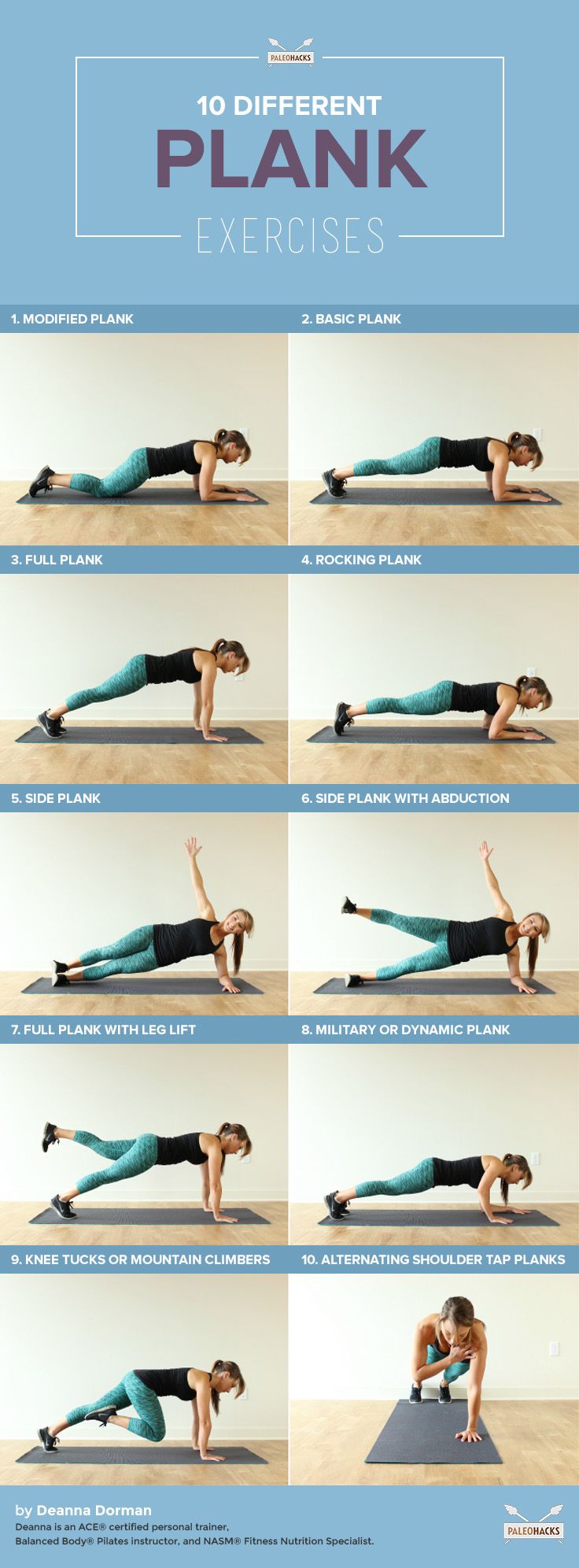

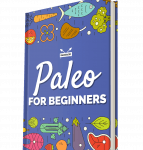
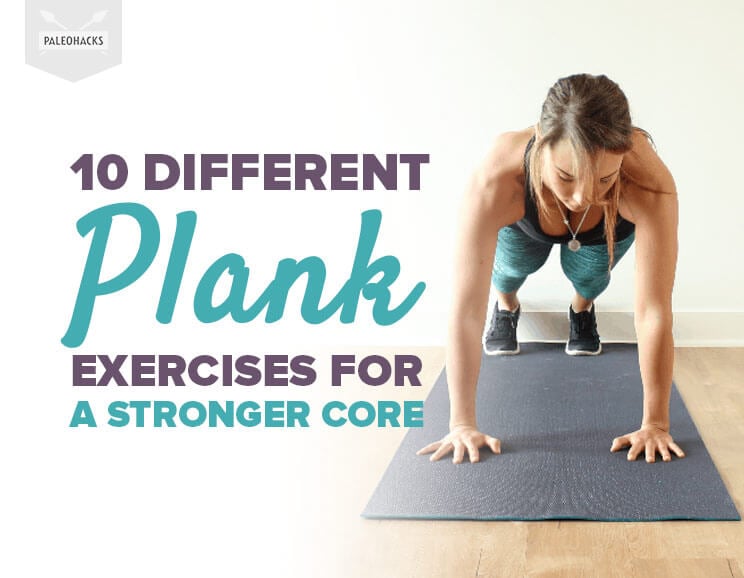
 Creamy Chocolate Coconut Popsicles
Creamy Chocolate Coconut Popsicles
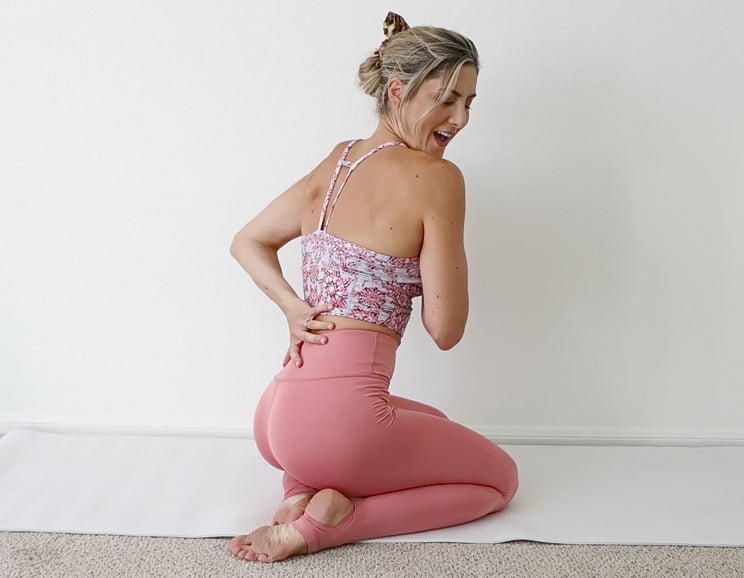
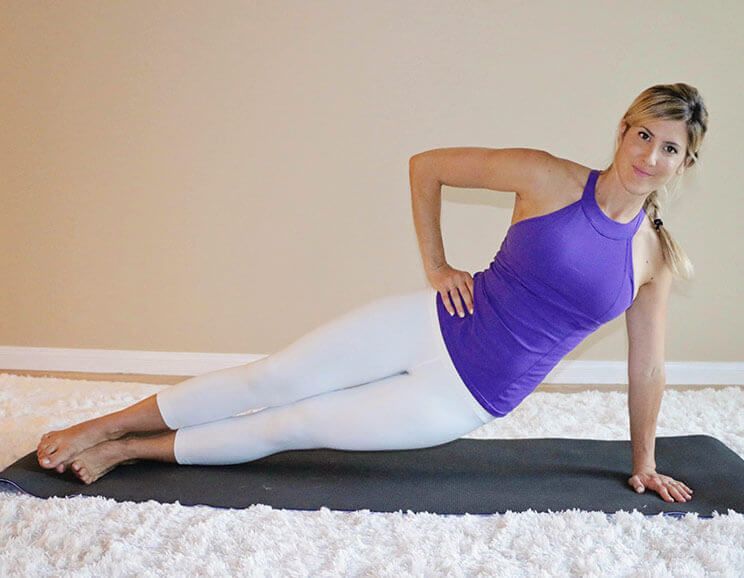
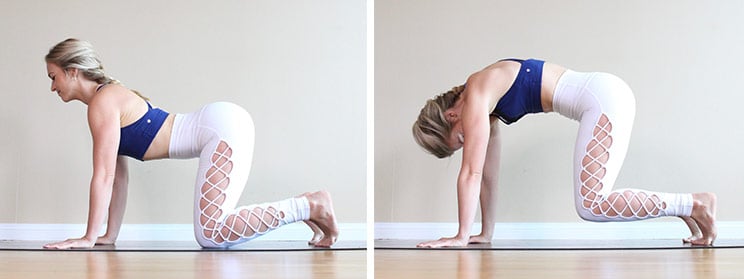

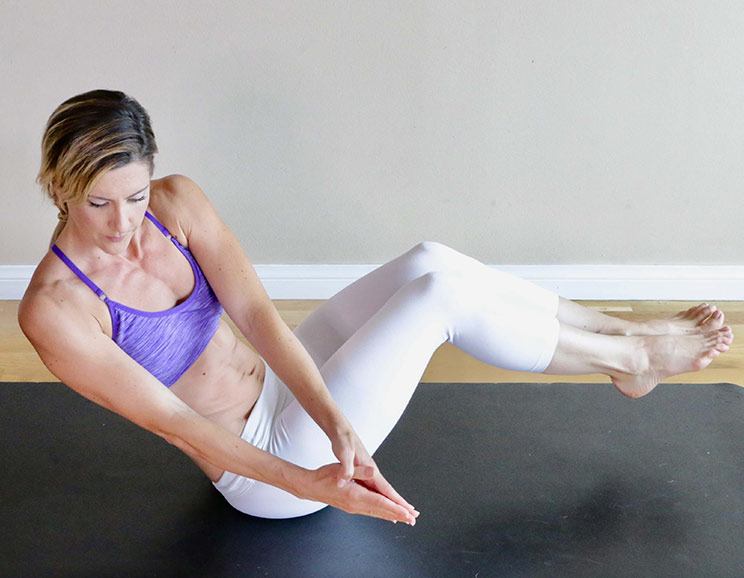
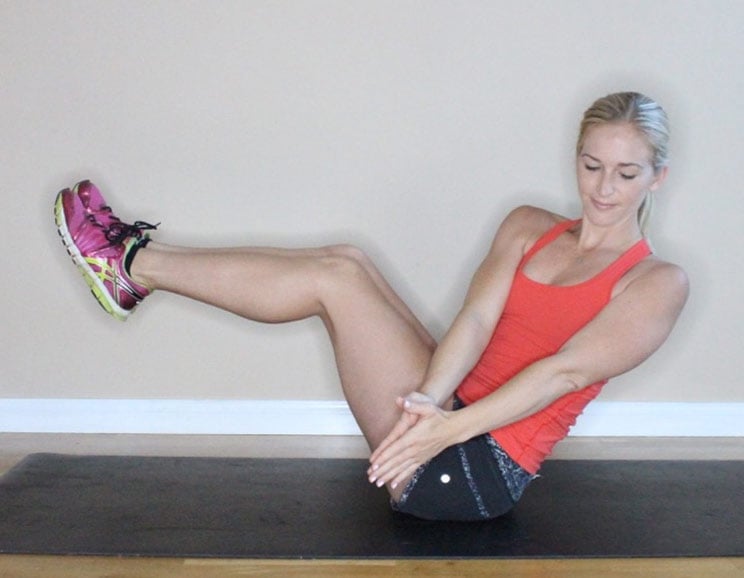
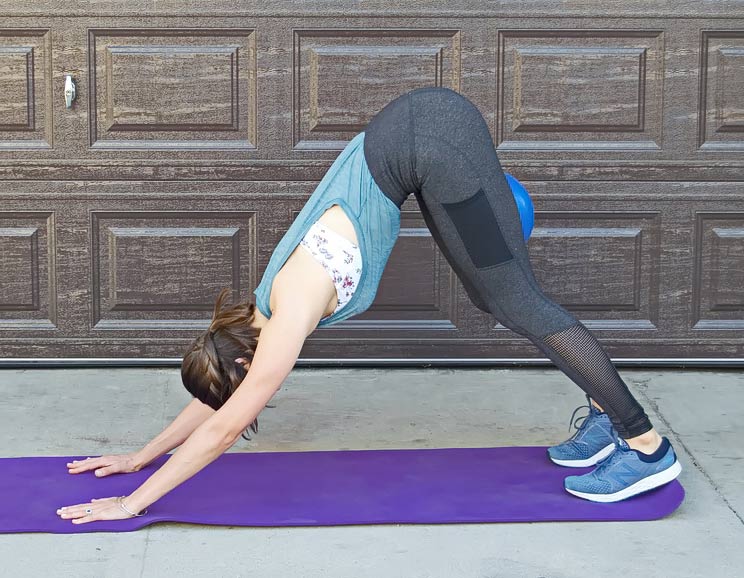

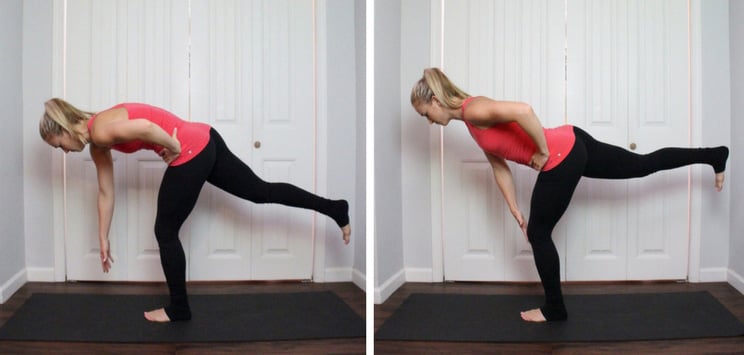
Show Comments